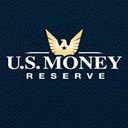The Recession of 2019. Where Will You Be?
By John Rothans, Chief Numismatist @ U.S. Money Reserve
“I haven’t felt this good since 2006,” joked Goldman Sachs CEO Lloyd Blankfein in a CNN Money interview earlier this year before warning about the increasing risk of rising federal deficits and the pace of the Quantitative Easing (QE) unwind.
In February, Bridgewater co-chair and hedge fund billionaire Ray Dalio talked similarly of a “goldilocks economy” and the high probability of a recession before the next presidential election.
J.P. Morgan’s “Private Bank Spring Investment Barometer” reported that a large portion of the ultra-high net worth individuals surveyed conclude that an economic downturn will begin next year. Energy market professionals put the odds at a daunting 40 percent. In a May sit-down, investment heavyweights Art Cashin, Peter Boockvar, Barry Habib, and Brent Donnelly reached a similar consensus as they projected an economic slump for the second half of 2019, which coincides with Morgan Stanley’s calculation that the yield curve will invert sometime midyear 2019.
Despite a raging bull stock market, record low unemployment, rising GDP, and accelerated wage growth, a 2019 slowdown is all the talk in finance town.
Downturns are not unusual, mind you. Financial contractions and expansions are actually a normal part of the economic cycle, but the Great Recession (2007–2009) was an earthshaking event. Its debris field was vast and varied, its impact wide-ranging and reverberating. It ultimately changed the face of homeownership, employment, business investment, consumption, productivity, market metrics, and net worth. The recession was an economic earthquake that left a network of dangerous and dicey fault lines.
Paul Tudor Jones, generally credited with predicting the debilitating downturn of 1987, recently said, “The next recession is really frightening because we don’t have any stabilizers.” To his point, we sit in a post-crisis no man’s land with record levels of domestic and global debt, the heftiest federal balance sheet in history, the highest levels of unfunded pension liabilities, artificially low interest rates, and what many consider to be the most overvalued stock market on record.
Needless to say, recession chatter couldn’t come at a worse time.
We must not forget the economic carnage we endured just a decade ago. We saw more than our share of foreclosure signs. Everybody knew somebody who lost their job. Our 401(k)s looked more like 201(k)s. Most of us scaled back on borrowing and spending. The majority of Americans cut back on vacations and bought bargain brands. And many of us lost all faith that our children would ever be better off than we had been.
The U.S. economic expansion is now in its tenth year and among the longest expansions in history. There’s evidence that it has plateaued, and financial experts are sounding the alarm.
It’s a good time to reflect on what you were doing during the last financial crisis and what you would do differently when the next one hits. Last time, gold prices skyrocketed as individuals poured into precious metals — ultimately ushering in a modern-day gold rush. At U.S. Money Reserve, we pride ourselves on educating individuals and their families on the importance of holding gold, silver, and platinum coins produced by the U.S. Mint and backed by the U.S. government.
The only thing I would probably change this time around is to acquire more precious metals for myself.
